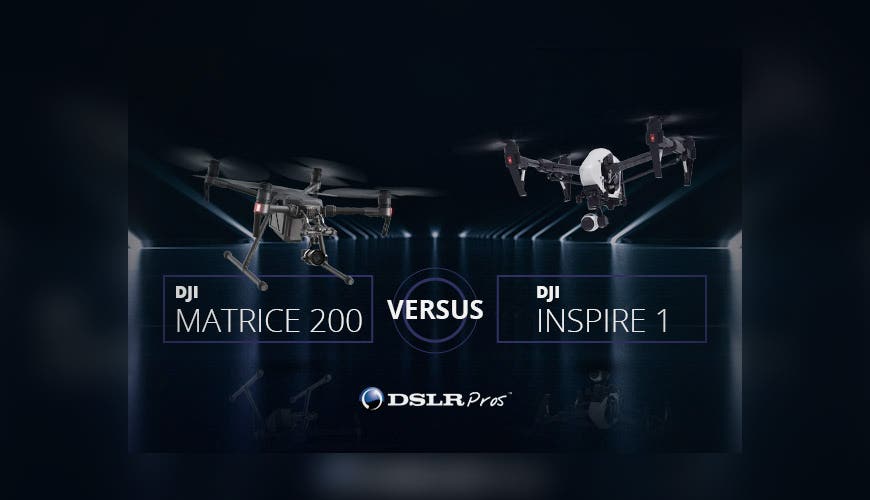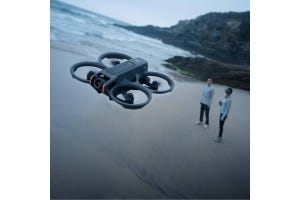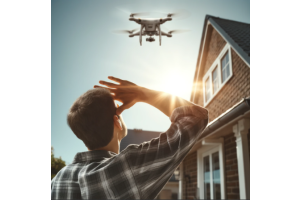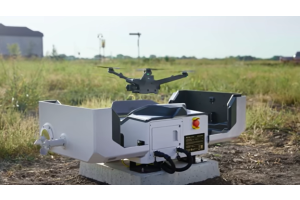
When it comes to commercial applications, most businesses require a little bit more of a workhorse than your run-of-the-mill DJI Mavic or DJI Phantom. If you like the assurance that comes with a large name brand in the drone world like DJI, there are several options available to you that are more than capable of pulling their weight and getting those heavy-duty jobs done, from public safety to infrastructure asset inspections, to search and rescue work.

Two such models offered by DJI are the Inspire 1 V.2 (not the Inspire 2) and the Matrice 200. DJI geared the Inspire 1 V.2 model as a lower cost alternative to the Matrice 200 and 210 models. To help you determine which may better suit your needs, here we’re lining up the DJI Matrice 200 and the Inspire 1 V.2 side by side to see how they stack up.
Size & Weight
Not surprisingly, in terms of size, the Matrice 200 is a little bit of a bigger bird, whether folded or unfolded, compared with the slightly smaller Inspire 1, which does not fold up, though it has an interesting feature of raising the arms to clear the view of the camera. It’s worth noting here that the Matrice comes with a greater variety of gimbal/payload options, whereas the Inspire has a more limited selection of camera/gimbal choices.

Matrice 200 dimensions: Folded (28 x 8.7 x 9.3 in) | Unfolded (35 x 35 x 15 in)
Matrice 200 weight: With TB50 batteries (8.4 lbs) | TB55 batteries: (10 lbs)
Inspire 1 V2 dimensions: Flat (20 x 17.5 x 8 in)
Inspire 1 V2 weight: With TB47 battery (6.3 lbs)
Flight time
Here the Matrice 200 really shows an advantage over the Inspire 1, with longer flight time capabilities in most circumstances. Depending on which battery you opt for with the Matrice, you could get up to 38 minutes of continuous flight, although that’s without any payload. With a full payload, and a standard battery, you only get 13 minutes of flight. The Inspire offers approximately 22 minutes of flight time, and of course you can’t really fly it without a payload, since it pretty much always comes equipped with a camera.
Matrice 200 Flight time specs with standard TB50 batteries: Without payload (27min) | full payload 13min
Matrice 200 Flight time specs with high capacity TB55 batteries: Without payload 38min | full payload 24min
Inspire 1 V2 Flight Time Specs with Tb48 batteries: With payload 18 min

Flight speed
In this category, the Matrice 200 and the Inspire 1 are more or less compatible, achieving similar flight speeds, although the Matrice can go a little bit faster than the Inspire when in S Mode or A Mode.
Matrice 200 Flight Speed: S Mode: 51.4mph P Mode: 38mph A Mode: 51.4mph
Inspire 1 V2 Flight Speed: A Mode: 49 mph
Battery performance
In both the Matrice 200 and the Inspire 1, you have the option to get either the standard, or a high capacity battery.
The Matrice 200 offers two models, either the TB50 (standard) or TB55 (high capacity). The TB55 vs the TB50 (7660 mAh vs 4280 mAh), and offers more energy (176.93Wh vs 97.58 Wh). Not surprisingly it also weighs more (Approx. 885g vs Approx. 520g).
The Inspire 1 also offers two model options, either the TB47 (standard) or TB48 (high capacity). The TB47 has a higher capacity than the TB48 (5700 mAh vs 4500 mAh), and offers more energy (129.96 Wh vs 99.9 Wh). Again, it also weighs more (Approx. 670g vs Approx. 570g). The bottom line here is that the batteries available for the Matrice 200 give you a little bit more power than those for the Inspire 1, which means the ability to carry heavier loads, and fly (slightly) faster. And they have a little bit more energy which plays out in longer flight times.
Weather resistance
If you’re concerned with the ability of your machine to perform in less than ideal weather situations, the Matrice 200 comes out ahead. The Matrice 200 is billed as having wind resistance of 39.4 ft/s (12 m/s), and an operating temperature range of -4° to 113° F (-20° to 45° C). The dual-battery power system automatically heats batteries when flying in sub-zero temperatures for greater redundancy and safety. The weather sealed design and IP43 ingress protection ensures the drones safety even in rainy conditions.
The Inspire 1 V2 offers much lower wind resistance of only 10 m/s, and a narrower range of operating temperature, from 14° to 104° F (-10° to 40° C). It also makes no such claims of having a water- or weather-proof design. This could be an important factor in favor of the Matrice especially if you need to fly in cold, windy, or wet conditions.
Camera/Payloads compatible with the DJI Matrice 200
The Matrice 200 drone has as a front-facing 2 axis camera. The drone is capable of carrying DJI’s newest drone cameras such as the weather sealed XT2 infrared camera and Zenmuse Z30 zoom cameras. The only compatible camera between the two drones is the Zenmuse XT thermal camera.
Zenmuse X4S ( 1” Camera sensor)
Zenmuse X5S (4/3” Camera Sensor, with interchangeable lenses)
Zenmuse Z30 (30x Optical Zoom Camera)
Zenmuse XT (Infrared/thermal camera available in different resolutions and lens configurations)
Zenmuse XT2 (Weather-proof Infrared and 4K camera)
SLANTRANGE 3PX (Higher-band Agricultural analysis sensor)
Sentera AGX710 (Lower-band Agricultural analysis sensor)
Camera/Payloads compatible with the DJI Inspire 1
The Inspire 1 comes equipped with the ZENMUSE X3 camera. Other compatible camera/gimbal options are:
ZENMUSE X5 (4/3” Camera Sensor, with interchangeable lenses)
ZENMUSE X5R (4/3” Camera Sensor, with interchangeable lenses)
ZENMUSE XT (Infrared/thermal camera available in different resolutions and lens configurations)
ZENMUSE Z3 (3x Optical Zoom Camera)
In this comparison, it becomes fairly clear that the Matrice 200 is a heavier-duty machine than the Inspire 1, with longer flight time, better weather resistance, and greater flexibility in payload capabilities. However, the Inspire 1 may be just the ticket if you are looking to have interchangeable and infrared cameras but at a lower price point. Before investing in a drone for your business, it’s important to consider exactly what your needs are, and judge from there which machine will be the best fit.






